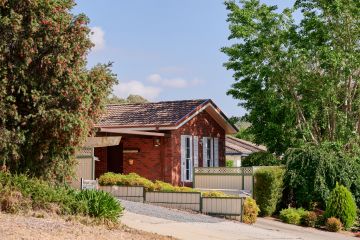Multi-age precincts envisioned to fight middle-aged spread in Australian cities

Australia’s cities are becoming increasingly middle-aged with older people moving out when they reach a certain age to live in retirement villages in the outer suburbs, and the young mostly unable to afford to move in.
But now a group of housing experts has come together to buck the trend, by promoting the idea of multi-age apartment towers that cater for everyone, from the very young to the elderly.
“During holiday time, you see a lot of older people in the city coming to shop and meet friends and go to shows,” says architect Simon Drysdale of Marchese Partners. “But the rest of the time, where are they?
“They’re leaving the city and going to live in places where they can become isolated, away from their family and friends, which can be damaging physically and psychologically. It’s important to keep a mix of people in our cities to live well together, and improve our cities.”
Drysdale, together with a working group made up of industry leaders in housing design, demographics and planners, has come up with a bold plan for multi-age precincts. They’ve sketched out a vision of how one might work, with the hypothetical re-adaptation of the Quay West apartment hotel in Melbourne’s Docklands.
With a re-imagining of the architecture to include a selection of all-sized apartments, and green spaces at the base of the building, halfway up and on the rooftop, as well as a range of shared areas like a milk bar and quiet, contemplative zones, it could cater to a mix of age groups.
In addition, it would have a 24/7 concierge service, offering a range of support services, and security, for older residents.
“It’s a strange thing, this idea that when people reach a certain age, they might all want to live in a fenced community a long way from the city, their old community and everyone else,” says Ellen Witte, director of SGS Economics and Planning, and another of the working group.
- Related: Rediscovering Melbourne’s Docklands gem
- Related: Choosing renovation over retirement villages
- Related: Proposal for township for dementia patients
“Isn’t a multi-aged precinct like communities ought to be, and once were, with a number of generations of the one family living together under the same roof and doing the childminding for the parents and helping out grandparents? We’ve designed a precinct here with a diversity of housing and services integrated within one development, suitable for all ages.”
That kind of multi-age development has already been successfully trialled overseas, in countries like the Netherlands and Japan, where young residents have ended up helping their older neighbours with things like computing skills, and in return have been mentored in professional and life skills.
“It’s a different concept to just developers churning out different product they can sell without establishing how we’d like our cities to look in the future,” says Ms Witte. “We’ve also done feasibility testing and found that such an inclusive project could be delivered with a positive return to market, just at possibly a lower profit margin.”
Such developments would aim to be age and socially diverse, close to transport and services, with a mix of housing types, sizes and price points, and have plenty of public shared spaces. The buildings would bring people together, rather than keeping them apart.
One of the ways of encouraging socialisation would be three distinct levels of greenery in a high-rise. Brendan Papworth of landscape architects Papworth Davies designed the Quay West speculative project to have an entry at ground level with lots of plantings, like the front garden of a regular house. Halfway up the building was another vaulted garden over two to three levels to mimic people’s backyards.
And on the rooftop is another landscaped area, to take on the role of the local park. “These are all areas where people can congregate or play or socialise together,” says Mr Papworth. “It’s all designed so a variety of groups can sit together at the same time and either mingle, or not, as they choose.”
At property and construction advisory firm Slattery, director Belinda Coates has been talking to developers and state governments about the ideas. She’s found most people have been interested, and excited, by the possibility of such projects.
“We wanted to design a project that’s deliberately aspirational so people look and want to talk about how we can get it to work,” she says. “It’s all about ‘What if?’ What if Marjory on the 10th floor can teach student Lucy how to make a lasagne and Lucy can teach her, in return, about the internet?
“We keep hearing about retirees selling up and moving out but really missing the arts centres and culture that they once loved. We want to make it easier for them to continue to enjoy the city and stay close to their friends and community.”
Such a cross-range of ages will also keep the cities alive, Ms Coates believes. Young people coming back home at 3am will keep the streets busy in the early hours, while retirees getting up at 6am to go out at breakfast will continue the activity.
“We want to help developers to create beautiful cities that everyone, of all ages, can thrive in,” she says.
We recommend
We thought you might like
States
Capital Cities
Capital Cities - Rentals
Popular Areas
Allhomes
More







